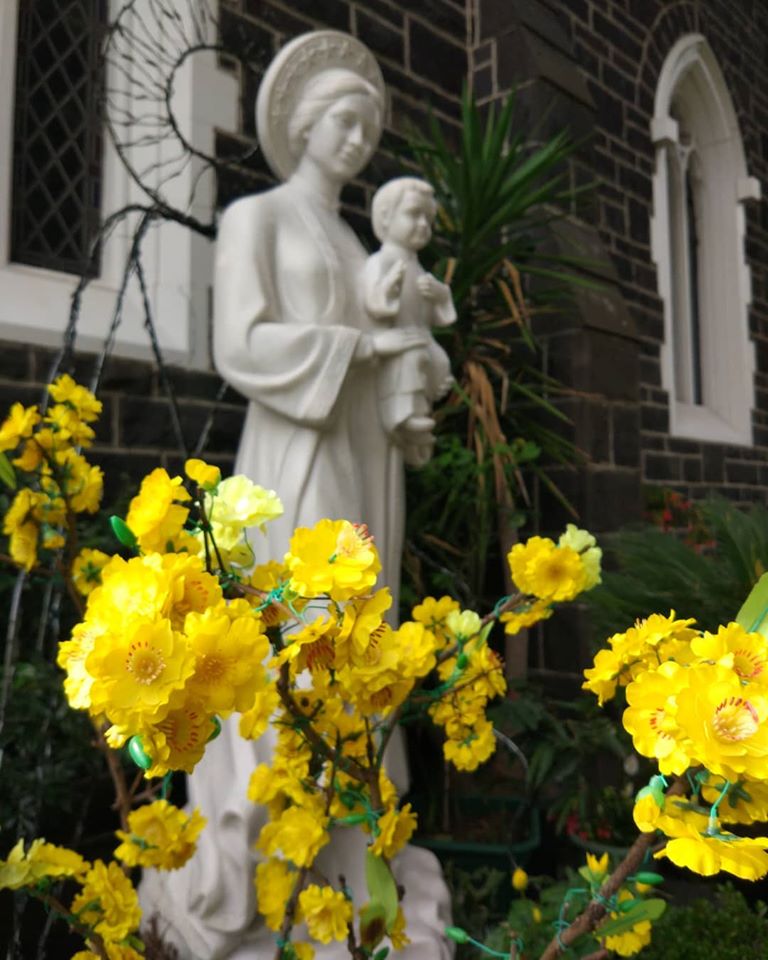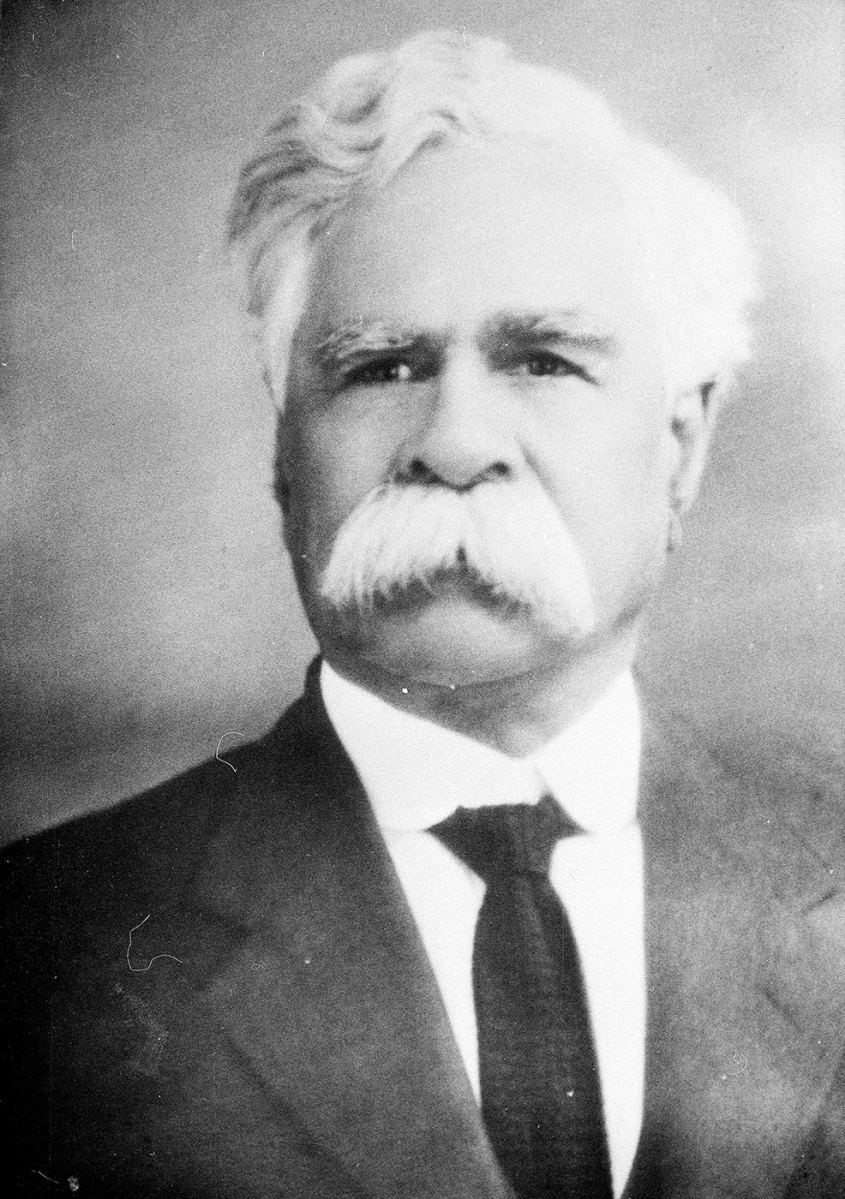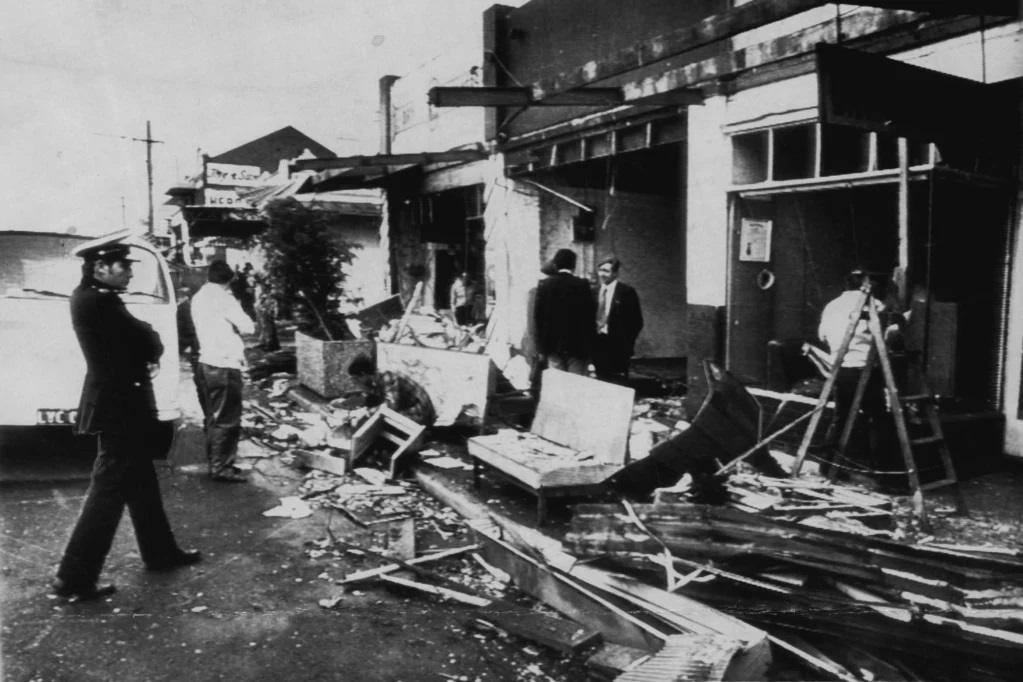Foreign Gods
From the train, you see a goddess. She’s not who you think she is. Here’s a meandering story of faith, fear, diaspora, and solidarity.

Map
Use the icon at the top left to toggle which tracks are shown, and “star” the map to save it to your Google Maps.
Transcript
The mystery of the goddess
Jinghua Qian: If you’ve ever taken the train into Footscray from the city, you’ll have seen her. Standing by the river, gold and gleaming, the monumental goddess has one hand raised in a gesture of benevolence.

For years, I assumed she was Guanyin 观音, the Buddhist goddess of compassion. She goes by a lot of different names, but you’d know her if you saw her, and you see her all over Asia, one hand raised and fruit at her feet.
But it turns out I was wrong. The golden statue at Footscray’s Heavenly Queen Temple isn’t Guanyin. It’s Mazu.
Mazu 妈祖 is a Chinese sea goddess. She turns up in both Taoist and Buddhist temples, but she’s also kind of her own thing. To be honest, Chinese people often don’t make distinctions between Taoism, Confucianism, Buddhism and folk religions – you just pray to all the gods and ancestors. Cast a wide net and hope that you catch some grace and good fortune.
Anyway, the really interesting thing about Mazu is that she’s much more popular with Chinese people outside of China. She’s a really big deal in Taiwan, which is less than 200 kilometres from the island where Mazu was born. A few years ago, when Christian homophobes tried to take down the marriage equality movement in Taiwan, queer activists called on Mazu for protection and support. It was a way of claiming a lineage and talking back to Christians who would argue that queer rights were a Western import, all while worshipping their foreign god.
As the patron deity of seafarers, it makes sense that Mazu speaks to migrants. A lot of my writing deals with the idea that Chineseness is not defined by the mainland, that it’s just as much forged in diaspora as it is made in China. So there’s something really poignant about Mazu being the de facto goddess of diaspora. We have our own culture in so many ways, why wouldn’t we have our own gods? Chineseness is a vast ocean with no centre but Mazu’s there beside us, holding the waves.
The virgin in the áo dài
I wasn’t brought up with Mazu or even Guanyin, actually – I was raised Catholic. If you walk down along the Maribyrnong from the statue of Mazu and turn right into Saltriver Place, you’ll soon find yourself facing St Monica’s, a Catholic church at the corner of Whitehall and Wingfield streets.
Step into the church garden, and you’ll see a white statue of the Virgin Mary holding baby Jesus. Look closer, and you’ll see that mother and son are wearing traditional Vietnamese clothing, with Mary’s cloak and áo dài reaching to the floor and her star-studded headdress suggesting a halo.

Our Lady of La Vang is a Marian apparition – a vision of Mary – who appeared, wearing an ao dai and holding an infant, to Vietnamese Catholics in 1798 when they’d fled persecution into the jungle. She’s now honoured by Vietnamese congregations all over the world, including here in Footscray.
I have a complicated relationship with Catholicism. My extended family are mostly atheists, especially after coming through the Cultural Revolution, but my mum converted to Catholicism when I was about seven. Soon after, I was baptised, and Mum took me out of my state school and sent me to St Monica’s in Moonee Ponds where I did my first communion and confirmation.
A couple of years later, I left the church: as a curious and opinionated teenager, I had a lot of questions – about patriarchy, about homophobia, but also about humanism and moral responsibility and how exactly does the Holy Trinity work anyway. It was soon apparent that my parish didn’t really have room for my questions, or for me and the person I was becoming.
But lately I’ve been drawn to the faith again. Even while feeling disgusted at the George Pell case, at abuse, denial and complicity in the church, I have to admit that there’s something I miss, especially in these apocalyptic times. There are a lot of things in my life that offer wonder, or consolation, or a sense of collective purpose, but nothing quite replaces everything that a community of faith provides: ritual, duty, scripture, direction, mystery and surrender.
Activism, at least the way I’ve known it, is often quite dull: lots of long meetings and spreadsheets and rosters. Often you don’t win and when you do, it’s temporary. The part of Catholicism that I long for is the idea that you do the work, humbly, you push through the tedium expecting nothing, but something intimate and transcendent is just at the edge of your vision. Not because you deserve it, not because you earned it, just because you need it. That’s grace.
Solidarity sermons
Let’s head towards Seddon for some solidarity sermons.
Like many major religions, Catholicism embodies conflicting impulses: sometimes it stands for social justice, solidarity and resistance, sometimes for authoritarianism, conservativism and control. In much of the world, Catholicism came hand-in-hand with colonisation, yet many colonised people have also found meaning in the church and made it their own.
During the Covid lockdown, just before Easter, I joined a collective fundraising and campaigning in solidarity with undocumented migrants in Australia, and at the same time I started looking around for online masses to attend. I guess I craved communion. I came across a video message from Parramatta bishop Vincent Long on YouTube, where he marked the Feast of St Joseph the Worker with a call to extend income support to non-citizens. “Let us hope that this exposure will translate into a broader and enduring societal solidarity,” he preached.
Bishop Long used to be based in Melbourne – he was the first Asian to be made a Catholic bishop in Australia, and the first Vietnamese bishop to lead a diocese outside of Vietnam. He’s spoken about fleeing Vietnam by boat and how his appointment sent a message to a nation that has become increasingly unwelcoming to refugees. In all his sermons, his focus is on the most vulnerable.
His words remind me of another Asian Australian, more than a century earlier: Harry Louey Pang. Like Bishop Long, he arrived in Australia as a teenager. Harry Pang was a lot of things – a cabinet maker, an agitator for the Chinese republic, a union organiser, and a Christian.

In 1905, he addressed the congregation of the Victoria Street Methodist Church. It’s now the St Ilija Macedonian Orthodox Church in Seddon, but back then this was still Footscray. He spoke up against the White Australia Policy and unfair labour laws.
“Jesus Christ was an Asiatic. According to our immigration laws, He could not have been admitted to this country,” he said. He added that Australia originally belonged to Black people, who, though they’d been dispossessed by Englishmen, were still here. “How does the cry for a White Australia sound to the Australian Aboriginals?” he asked. The local newspaper reported that his speech was received with much applause from the mostly European audience, which is remarkable given that Footscray was often the site of anti-Chinese meetings.
I found Harry Pang’s speech bewildering because I still hear this same rhetoric today.
People often assume that the world is on a steady trajectory away from racism. That progress is slow but inevitable. We want to imagine that humanity is on this redemption story arc, shifting from ignorance to enlightenment, intolerance to inclusion. But the archives show that we’ve been having these same conversations for a long time. It’s not that people didn’t know, and now they know. Racism is an ideological conflict that doesn’t expire on its own. It has always been fraught. And it has always been fought over.
One of the most well-known solidarity stories from Footscray is the Australian Aborigines’ League’s protest condemning the violence of Kristallnacht. In 1938, Yorta Yorta man William Cooper – then 77 years old – led a group who walked from Footscray to the city to deliver a petition to the German consulate.

“On behalf of the Aboriginal inhabitants of Australia, we wish to have it registered and on record that we protest wholeheartedly at the cruel persecution of the Jewish people by the Nazi government in Germany,” their petition said.
Two years earlier, a Jewish architect, Joseph Plottel, had designed Footscray Town Hall. He later sponsored several Jewish refugee families to come to Australia.
Many people seem to think that the White Australia Policy just sort of naturally dissolved after World War II as everyone was horrified by the Holocaust. But even in December 1946, influential Australian magazine The Bulletin published a cartoon showing incoming Jewish refugees as vermin. Then, as now, the media helped inflame racism, turning fear, resentment and unfamiliarity into pernicious ideologies.
As April Rosenblum says in her extraordinary zine on antisemitism today, “The past didn’t go anywhere. Antisemitism didn’t somehow naturally disappear after its worst outbreak … oppression doesn’t go away by itself. You have to take action.”
Footscray fascists
Did you know there was a fascist terrorist attack here in the 70s?
On 25 May 1975, the St Ilija church hall and many other buildings along this strip were damaged in a bombing targeting a Yugoslav travel agency across the road at 154a Victoria Street. The blast blew out the shopfront and took off the roof.

As Jeff Sparrow recently wrote, “The most sustained terror campaign in this country’s history was conducted by a Croatian fascist group usually known as the Ustasha.” In Sydney, they had bombed the Yugoslav Consulate in 1969 and a Yugoslav travel agency in 1972. In Melbourne, their activities centred on Footscray.
In the 60s and 70s, Footscray had become notorious as a hub for Croatian fascist separatists who supported the Ustasha – the Croatian allies of the Nazis who’d murdered hundreds of thousands of Serbs, Jews, and Roma during World War II. After the war, the antifascist resistance took over and Croatia became part of communist Yugoslavia. But pro-Ustasha groups still hoped to claw back power. One way was to mobilise the diaspora.
In Footscray, these factions would hang out at Tomislavgrad café on Hopkins Street and Senoa bookshop on Barkly Street, which sold pro-Ustasha magazines, some with recipes for bombs. There were often brawls between Ustasha sympathisers and other Croatians or Yugoslavs. One man was even murdered.
It’s all pretty hectic and when I first learned about this history, I was surprised there wasn’t a memorial of some sort – even just a plaque between all the fancy brunch spots that are around here now. But it also makes sense that we don’t hear about it.
Years ago, I used to work at an organisation for multicultural broadcasters, and one day an elderly Croatian man called in, quite distressed, saying that fascist sympathisers had taken over the local Croatian community radio program. That was the first time I’d ever heard of the Ustasha. I talked him through how to put in a complaint to ACMA, but I was pretty pessimistic at his chances. Australian media authorities are really soft on even blatant examples of racism in English-language media – I couldn’t see them acting on something that required background reading.
Australians tend to avoid difficult topics. Multiculturalism, here, is colourful and shallow – we want migrants to bring over their food and music, not their homeland drama. A complicated sectarian conflict that’s not just about religion or language but also communism, fascism, nationalism, and independence? Forget it.
But we can’t forget it because these fascists are still around. Last January, my friend and I confronted a man flaunting a swastika tattoo at Footscray station. In December, residents had to campaign to get Maribyrnong Aquatic Centre to acknowledge that swastikas are intimidating. The Croatian Club in Footscray still has a statue of Ustasha leader Ante Pavelić.
There’s a danger in telling this story this way. Maybe you’ll write it off as just some Croatian thing. Maybe you’ll reach for the default Australian response to any problem: ignore it or deport it. I hope not. The far right is a growing threat all over the world. Australia has already exported a white supremacist mass murderer to Christchurch. Ethnonationalism is a problem for every community. There are three statues in this story, but history is happening now and it doesn’t freeze if you look away.
Outro music is ‘What’ll we do when this is over?’, composed by Jack Davey and performed by Al Royal and Nicholas Robins at the Arcadia Theatre, Chatswood NSW, circa 16 December 1942.
Sources cited
Emily Rauhala, ‘A backlash against same-sex marriage tests Taiwan’s reputation for gay rights’, Washington Post, 20 April 2017. (Mentions appeals to Mazu)
Diocese of Parramatta, ‘Pastoral Message for the Feast of St Joseph the Worker‘, YouTube, 19 April 2020.
‘The White Australia Question: Would Christ Be Eligible? Views of an educated Chinaman’, The Independent, p 2, 9 December 1905.
‘Anti-Chinese meeting’, The Independent, p 3, 12 November 1887.
Sarah Gory, ‘William Cooper, Kristallnacht, and a Radical Act of Empathy’, Meanjin, 21 November 2018.
‘The Pied Harper’, The Bulletin, Vol. 67 No. 3486, p 15, 4 December 1946. (This antisemitic cartoon shows the Minister for Immigration, Arthur Calwell, playing Jew’s harp the way the Pied Piper attracts rats. See discussion by Suzanne D Rutland.)
April Rosenblum, The Past Didn’t Go Anywhere, 2007.
Jeff Sparrow, ‘Ignoring the Fascist Threat’, Jacobin, 11 March 2020.
Benjamin Millar, ‘Nazi tattoo backlash prompts Maribyrnong Aquatic Centre crackdown’, Star Weekly, 10 January 2020.
More
‘From the Archives, 1975: Bomb destroys Footscray travel centre’, The Age, originally published 26 May 1975, republished online 24 May 2020.
‘Ustasha’s New Anti-Semitism’, Tribune, p 12, 9 October 1973.
Terrorism emerges in Australia, ASIO, accessed 15 June 2020.
James Campbell, ‘Restaurant honours mass murderer’, Herald Sun, 13 April 2008.
Andrew Zammit, ‘Citizenship revocation and Australia’s counter-terrorism history’, 31 October 2019.
This is a really interesting discussion of how Australian authorities have responded to different threats. Zammit says that in 1975, the Department of Foreign Affairs rejected calls to deport convicted Croatian terrorists, saying that Australia would be ‘exporting terrorism’ and voicing concerns that a deported suspect’s human rights would not be respected. This stands in stark contrast to contemporary debates.


This is an excellent and important work about the area I grew up in and know so little about. Thank you so much.
What a joy to read! Thank you for this eloquent thought provoking piece. I thought that the statute was Guan Yin too. And interesting to know about the horrific bombing just a few feet away from Seddon Deadly Sins.
amazing!!!! amazing amazing. Thank you for your detailed work in researching this. I hope it is read/heard by many.